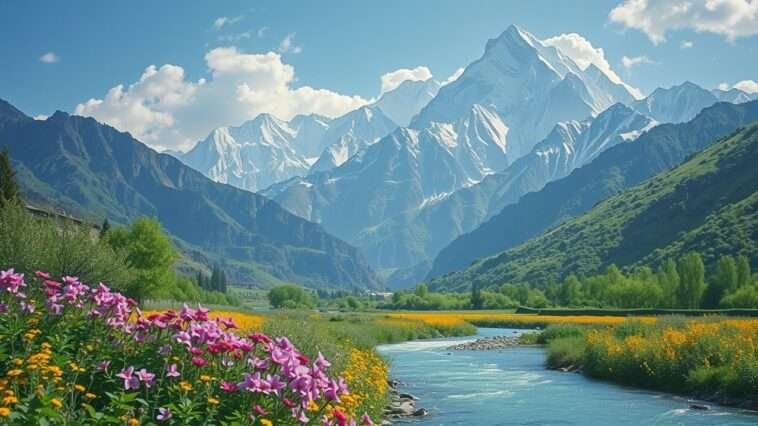The landscape of Pakistan is incredibly diverse and dramatic, showcasing a wide variety of geographical features that range from some of the world’s highest mountain peaks to sprawling deserts and fertile plains. This diversity makes Pakistan a unique and visually stunning country. Here’s a breakdown of its major geographical features:
1. Northern Highlands and Mountain Ranges
- Himalayas: Includes some of the highest peaks, such as Nanga Parbat (8,126 meters).
- Karakoram Range: Home to K2, the second-highest peak in the world (8,611 meters).
- Hindu Kush: Known for rugged terrain and valleys like Chitral and Swat.
- Features: Glaciers, alpine meadows, deep valleys, and fast-flowing rivers.
- Notable Places: Hunza Valley, Skardu, and Fairy Meadows.
2. Plateaus
- Balochistan Plateau: A vast, arid plateau with rugged mountains, deserts, and sparse vegetation.
- Famous for: Unique landscapes like Hingol National Park and Makran Coast.
- Potohar Plateau: Known for undulating terrain and archaeological sites like Taxila.
3. Plains
- Indus Plain:
- Formed by the Indus River and its tributaries.
- Covers Punjab and Sindh, known for fertile lands.
- Key for agriculture, especially wheat, rice, and cotton.
- Thal Desert: Located in the Punjab region, with sandy dunes and scrub vegetation.
4. Deserts
- Thar Desert:
- Located in Sindh and southeastern Punjab.
- Known for sand dunes, oases, and cultural festivals in towns like Umerkot and Mithi.
- Cholistan Desert:
- Spans southern Punjab.
- Famous for the annual Jeep Rally and Derawar Fort.
5. Coastal Areas
- Makran Coast:
- Extends along Balochistan and Sindh.
- Features pristine beaches, rocky cliffs, and natural wonders like the Hingol Mud Volcanoes.
- Karachi Coastline: Urbanized area with beaches like Clifton and Hawke’s Bay.
6. Rivers
- Major Rivers: Indus, Jhelum, Chenab, Ravi, Sutlej, and Kabul.
- Lifeline for agriculture and hydroelectric power.
- Indus River originates in Tibet and flows through the length of Pakistan.
7. Lakes
- Notable Lakes:
- Saif-ul-Malook (Kaghan Valley).
- Attabad Lake (Gilgit-Baltistan).
- Manchar Lake (Sindh) – Pakistan’s largest freshwater lake.
8. Forests
- Types:
- Coniferous forests: Found in northern areas like Swat, Dir, and Azad Kashmir.
- Mangroves: Along the Indus Delta in Sindh.
- Significance: Provide ecological diversity and natural beauty.
9. Natural Parks and Reserves
- Hingol National Park: Known for rugged terrain and wildlife like ibex and leopards.
- Deosai National Park: Famous for its high-altitude plateau and rich biodiversity.
10. Climate Zones
- Arid and Desert Areas: Balochistan, Thar, and Cholistan.
- Temperate Regions: Northern areas and parts of Punjab.
- Tropical Coastal Zones: Sindh and Balochistan coasts.
- Glacial Zones: High-altitude regions in the Karakoram and Himalayas.





